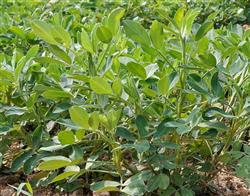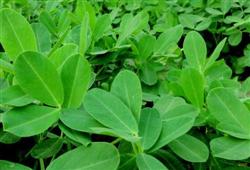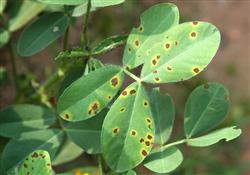Peanut planting technology: how to manage the later stage of peanut?

How to manage the later stage of peanuts? Please give guidance on the following main management points in the later stage of peanut: after excluding stagnant water and anti-rot fruit in autumn, if Rain Water is too much and the field drainage is poor, it is easy to cause peanut root rot, stem and leaf decay, reduce the satiety rate, and when the pod is serious, it will rot or sprout. Therefore, when there are too many Rain Water in the later stage, the ditches should be dredged in time to eliminate stagnant water in order to ensure the high quality and high yield of peanuts. In case of drought and watering, the plant water requirement of satiated peanut decreased in the later stage of growth, and the soil water content should be 50%-60% of the maximum field water holding capacity. Although there is little water demand in this period, the root system is easy to decay in dry weather, which leads to the shedding of top leaves, withering of stems and branches and reducing the rate of full fruit. Therefore, when the soil water content is less than 40% of the maximum water capacity in the field, it should be watered immediately to protect the roots and leaves and improve the full fruit rate. When watering, small water should be irrigated quickly in furrow or sprinkler irrigation, and flood irrigation should be avoided. Extra-root topdressing required less nutrients in the later growth stage of peanut, but it had a great effect on the formation of yield and the improvement of pod plumpness. The absorption capacity of peanut root system decreased in the later stage. From the late podding stage, 1% 2% urea solution or 0.2% potassium dihydrogen phosphate solution should be sprayed on the leaves every 7-10 days, spraying 2-3 times, 50 kg per mu each time, in order to prolong the functional period of 4-6 leaves in the upper part of the stem and improve the plumpness of pods. Do a good job in three prevention, increase production and prevent growth: for fields with good water and fertilizer conditions and vigorous peanut growth, when a large number of peanut fruit needles enter the soil, 15% paclobutrazol powder is sprayed 30 grams per mu to 40 kilograms of water, or 20 percent of Zhuangfengan 30 milliliters to water 40 kilograms. Should be sprayed in the afternoon to avoid re-spraying, leakage spray, 8 hours after spraying in case of rain to re-spray. Prevention of premature senescence: for peanut fields with insufficient application of base fertilizer or high yield, spraying foliar fertilizer in the late growth stage of peanut is an effective measure to obtain high quality and high yield of peanut. The mixture of 1% urea and 0.5% potassium dihydrogen phosphate can be sprayed 30-50 days before harvest, 50 kg per mu each time, once every 10 days, generally 2 times 3 times, which can improve the plumpness of pods. Disease and pest control: due to more rainfall and humidity in the later stage of peanut growth, it is necessary to do a good job in the prevention and control of leaf spot, grubs and cotton bollworm. Click to get more peanut planting techniques click to get more food crop planting techniques
- Prev

Peanut planting technology: how to manage peanuts in summer?
How to manage peanuts in summer? Please introduce the management methods of peanuts in summer there are mainly the following points (for reference): 1. Intertillage herbicidal peanuts need to be ploughed for 3 times during the growth period. The first intermediate ploughing should be carried out after finishing the seedlings, and the first intertillage should be shallow so as not to bury the seedlings, and the second intertillage should be carried out after 15.
- Next

Peanut planting technology: what are the diseases in the later stage of peanut?
What are the diseases in the later stage of peanut? Please give guidance on the occurrence of leaf spot in peanut in the later stage, which is commonly known as brown spot and black spot, commonly known as black spot and black spot. The damaged leaves were characterized by the destruction of chlorophyll, resulting in early falling flowers and poor pods. Symptoms: Brown spot mainly occurs in leaves.
Related
- The first cup of black tea in spring, the flavor and history of tea gardens in Kenya, Africa
- The computer can not only choose potatoes, but also grow tea rice. AI will grow winter oolong tea champion.
- It is not only the inflated tea bitten by insects, but also engraved with the four seasons tea in Beipu.
- The Oriental Beauty Tea Festival in Zhuxian County takes the stage at the weekend to experience the plus-size feast of oil tea.
- & quot; Oriental Beauty Tea & Exploration of Emei in Hsinchu, the hometown of quot;
- The new variety of strawberry "Tainong 1" dessert is the first choice with mellow aroma. Crimson gorgeous
- History of Tea in Taiwan: from Wild Inner Mountain to Export Tea Garden
- Two types of Taiwan Oriental Beauty Black Tea won the British three-Star Award for Childhood Tea Xiang Zhang Jiaqi changed from pilot to champion tea maker.
- Banana species and varieties: the planting history of Taiwan Xianren banana and dwarf banana is long, is banana disease resistant?
- Coffee planting Technology: Qianjie Coffee from Seedling to harvesting

